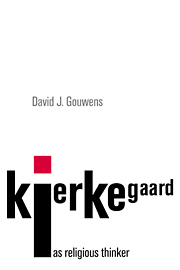Book contents
- Frontmatter
- Contents
- Acknowledgements
- List of abbreviations
- Introduction
- 1 Diseases of reflection
- 2 Anthropological reflection
- 3 Becoming religious: upbuilding before God
- 4 Becoming Christian I: responding to Christ in faith
- 5 Becoming Christian II: suffering and following Christ in hope
- 6 Becoming Christian III: love and imitating Christ in works
- 7 Witness in faith, hope, and love
- Conclusion
- Bibliography
- Index
6 - Becoming Christian III: love and imitating Christ in works
Published online by Cambridge University Press: 14 October 2009
- Frontmatter
- Contents
- Acknowledgements
- List of abbreviations
- Introduction
- 1 Diseases of reflection
- 2 Anthropological reflection
- 3 Becoming religious: upbuilding before God
- 4 Becoming Christian I: responding to Christ in faith
- 5 Becoming Christian II: suffering and following Christ in hope
- 6 Becoming Christian III: love and imitating Christ in works
- 7 Witness in faith, hope, and love
- Conclusion
- Bibliography
- Index
Summary
If there were no spring at the bottom, if God were not love, then there would be neither a little lake nor a man's love. As the still waters begin obscurely in the deep spring, so a man's love mysteriously begins in God's love.
Works of Love, 27 (SVix 13–14).Love is not a feeling. Love is put to the test, pain not.
Wittgenstein, Zettel, 504.The epigraph from Wittgenstein can help us approach Kierkegaard's extensive reflections on the third and culminating virtue of love. “Love” is not shapeless, anymore than are faith and hope; love too has a “grammar.” Like Wittgenstein's notion that grammar “shows differences” as well as the “family resemblances” between uses of a concept, Kierkegaard's reflections on love, as on faith and hope, show a similar dialectical interest in making distinctions. Love is analyzable as a human passion, and his literature, beginning even with his dissertation on The Concept of Irony and, of course, his portrayals of romantic love (especially in literature) and married love in Either/ Or, contain extensive treatments of human love. Kierkegaard is one of the great philosophical and theological thinkers on the love (pathological or healthy) that binds humans together. As indicated in the epigraph above from Works of Love, Kierkegaard sees divine love as the source and ground of human love. Christian love is specifically definable in terms of God's love and human love as a response of “neighbor-love.”
THE DIALECTIC OF OPPOSITION
The first impression that a reader receives in turning to Kierkegaard's understanding of Christian love is the contrasts between natural love and Christian love.
- Type
- Chapter
- Information
- Kierkegaard as Religious Thinker , pp. 186 - 208Publisher: Cambridge University PressPrint publication year: 1996



